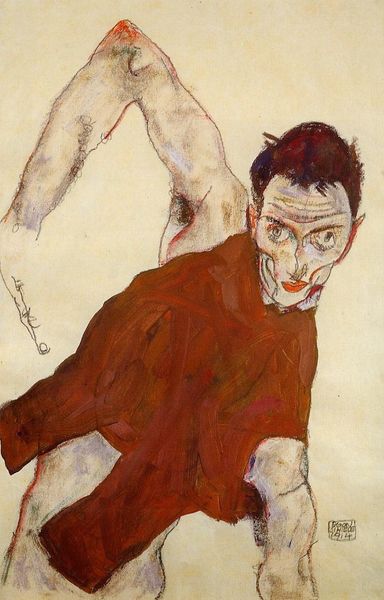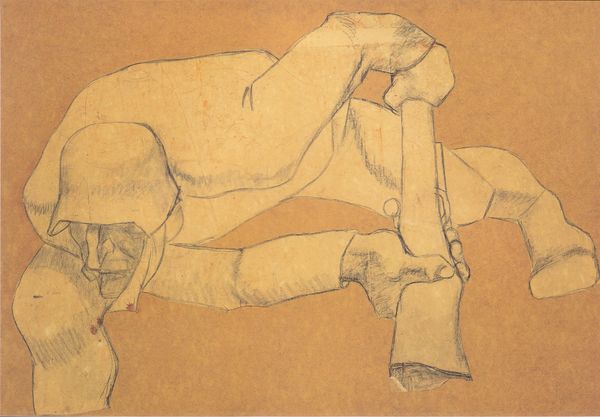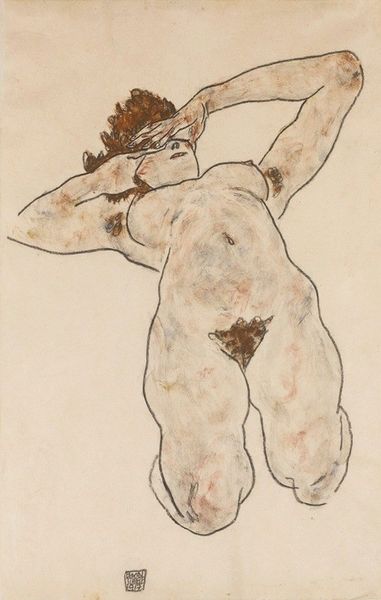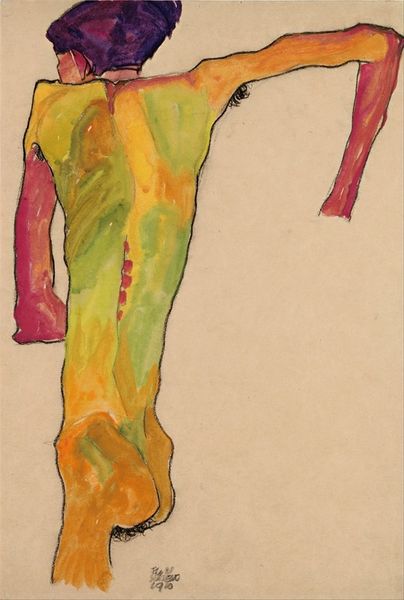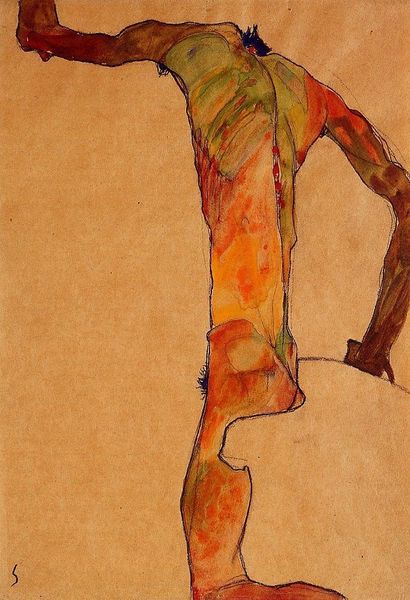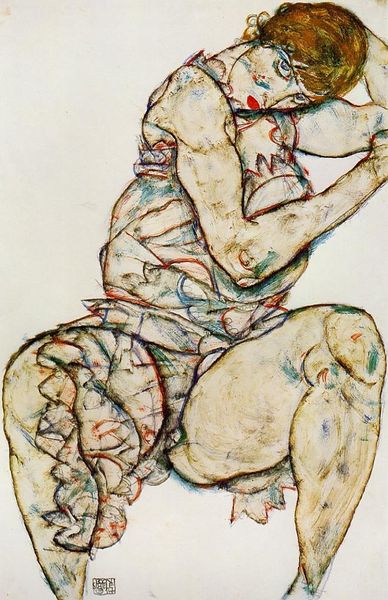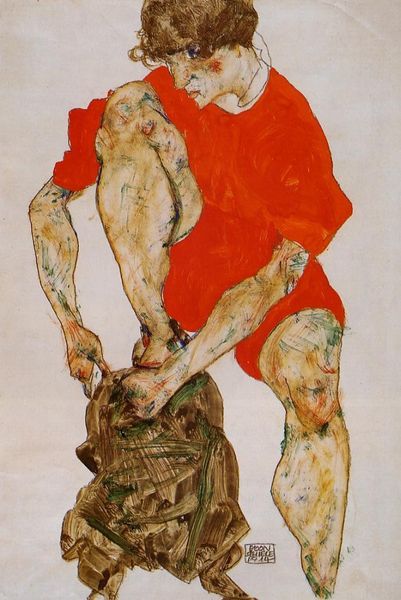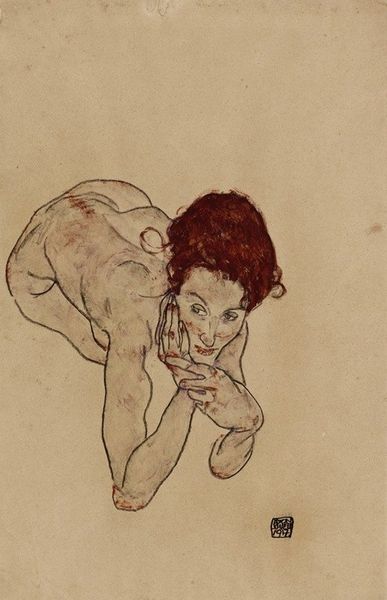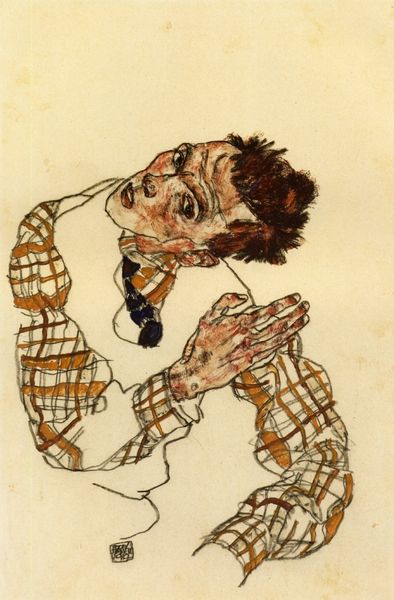
drawing, paper, ink
#
portrait
#
drawing
#
figurative
#
self-portrait
#
german-expressionism
#
paper
#
ink
#
expressionism
Copyright: Public Domain: Artvee
Curator: Looking at Egon Schiele's "Self-Portrait In Yellow Vest" from 1914, one immediately notices the raw, almost aggressively direct gaze, even though he's turned to the side. What are your initial thoughts? Editor: Angular. Uneasy. I find my eye is drawn to the tension in his pose, but also to the texture, to the materiality of the drawing itself. Look at how thin the ink is, how it barely clings to the paper in places. It feels fragile, like a fleeting thought captured hastily. Curator: Interesting, that fragility mirrors a common thread in Schiele's self-portraits, the exploration of mortality. The vest, the ochre hue of it, appears almost like a protective layer, shielding a vulnerable core, or is it an ironic barrier to keep one at arm’s length? Do you see a correlation between his attire and his state of mind, or could this yellow garment signify something deeper in turn-of-the-century Vienna? Editor: The yellow definitely jumps out. Given the era and the artistic circles Schiele frequented, it’s easy to see echoes of Van Gogh's yellows—perhaps a conscious nod. But beyond that, the loose strokes suggest a garment made quickly, economically. What was the social context for a painter adopting this style? It feels more studied, like an intentional blurring of the boundaries between fine art and the work of the common man. And it’s drawn with ink, not painted, pointing back to his process and resources at the time. Curator: Precisely, he’s almost dissecting himself here, exposing the sinews of the creative act. Note the gaunt face, almost skeletal. There is an undeniable current of anxiety, and yellow in the western visual vocabulary has historically carried symbolic associations, from sickness to cowardice but even more notably with enlightenment. This resonates with expressionism at the time to create powerful expressions of angst and modern realities. Editor: And he chooses drawing, not oil on canvas. I see it as a conscious decision about the means of production. It’s immediate, less mediated. Was he embracing a faster method, allowing him to more rapidly document an intense moment of artistic production and personal self-evaluation? This could mean faster consumption to his audience, if he decides to present the artwork this way. Curator: Ultimately, I think it’s a deeply personal and honest piece. Schiele strips away pretense, exposing himself, perhaps too honestly. The yellow vest can be read as many layers of a multifaceted symbolism for expressionism. Editor: Exactly, it shows art production during that time. For me, the value here lies in witnessing that specific artistic and economic practice.
Comments
No comments
Be the first to comment and join the conversation on the ultimate creative platform.

